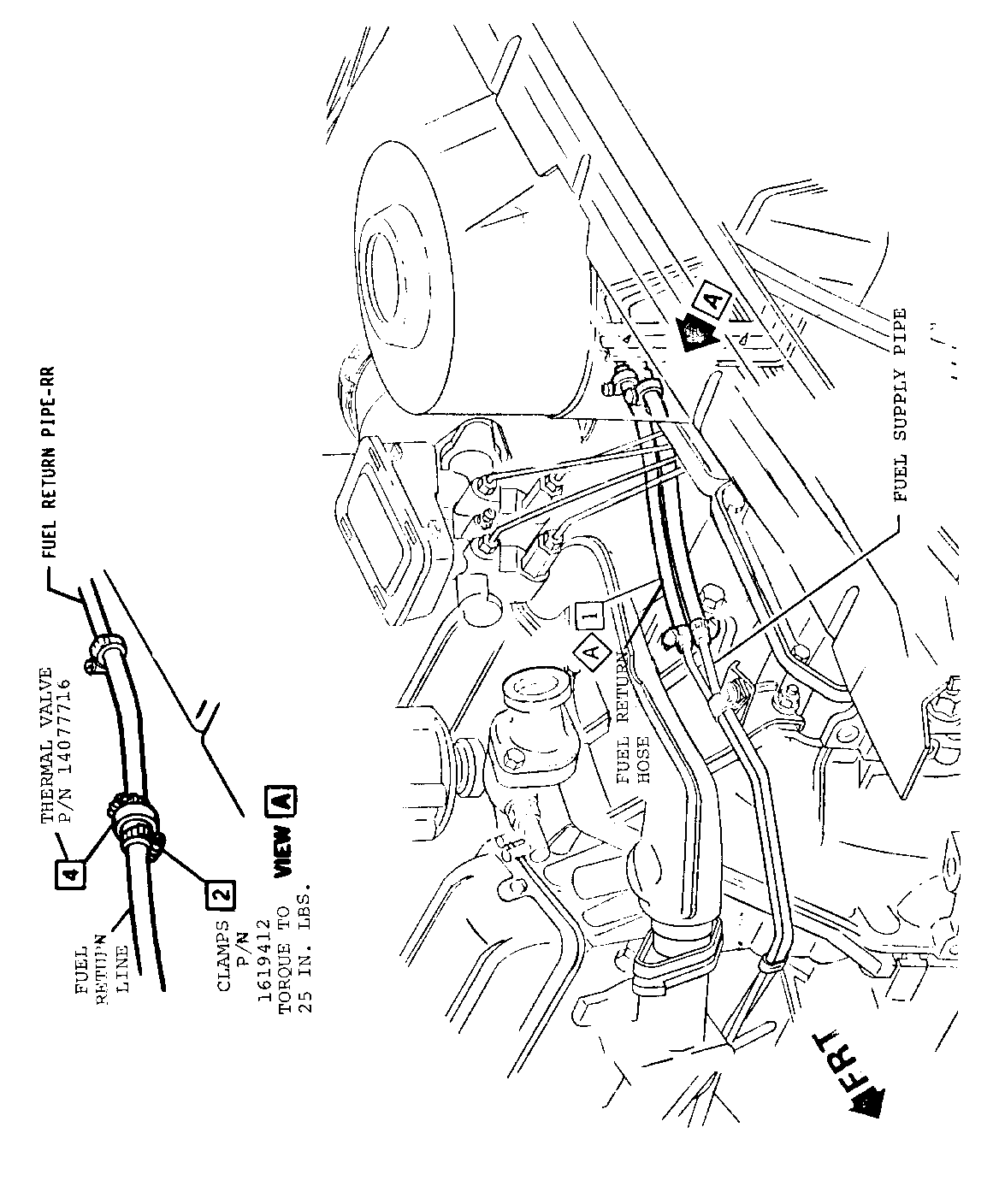FUEL LINE KNOCK-COLD FUEL THERMAL DISC/FUEL RETURN LINE

Some 1982 and 1983 6000 and Phoenix model vehicles equipped with a 2.8L V-6 engine may exhibit a fuel line knock when cold. The noise is normally heard inside the vehicle and is more pronounced when it is cold, but may still be present after the engine reaches operating temperature. In most cases the noise can be temporarily eliminated by pinching off the fuel pump return line hose.
To alleviate this condition, install a thermal disc valve (part number 14077716) in series with the fuel return line. The thermal disc valve closes off the fuel return line in ambients below 60 DEG F (15.5 DEG C) and when warm, it opens to a restricted orifice of .060 in. (1.5mm). The valve must be installed in the correct direction and, therefore, is labeled with "tank," which should go towards the fuel tank and "pump," which should go towards the fuel pump.
INSTALLATION PROCEDURE
1. Locate the fuel return line hose in the engine compartment and cut the rubber hose 2" inches from the end of the steel line which goes to the fuel pump. Next, remove approximately 1/2" of hose from the end of the hose that is attached to the steel line which goes back to the fuel tank (see illustration).
NOTE: Check if there is an existing restrictor (orifice) installed inside the remaining lengths of hose and remove it if one is present.
2. Remove and discard the hose supplied on the thermal valve and install the valve in the correct flow direction.
3. Install hose clamps (part number 1619412) and torque to 25 in. lbs.
4. After installing the thermal valve, check for the clearance between the valve and the fuel feed hose. If there is not approximately 1/2" of clearance, carefully bend the fuel return line pipe upwards to achieve this clearance.
WARRANTY INFORMATION
Labor Operation T3117 Time Allowance .3 Hr. Trouble Code 40

General Motors bulletins are intended for use by professional technicians, not a "do-it-yourselfer". They are written to inform those technicians of conditions that may occur on some vehicles, or to provide information that could assist in the proper service of a vehicle. Properly trained technicians have the equipment, tools, safety instructions and know-how to do a job properly and safely. If a condition is described, do not assume that the bulletin applies to your vehicle, or that your vehicle will have that condition. See a General Motors dealer servicing your brand of General Motors vehicle for information on whether your vehicle may benefit from the information.
